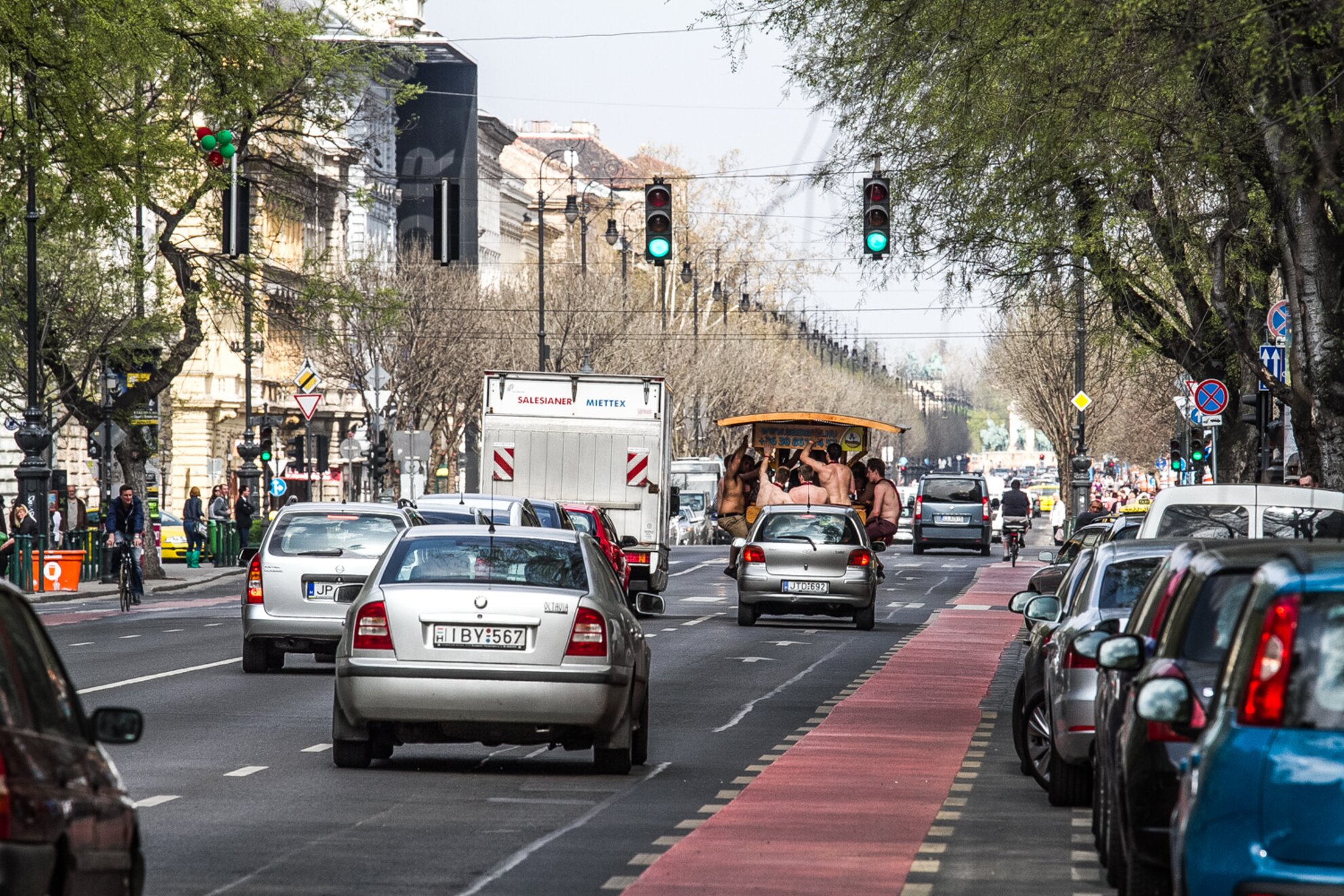Bike road Good to Know

According to the official definition the bike road is: “The lane, which is separated from the main road, which can be used only by bicycles and mopeds (with less than 20 kilometers per hour speed). There is a “bicycle road” sign on the beginning of a bike road and after every crossroad, and there is an “end of the bicycle road” sign, when the bike road is over.” We can find different types of bicycle roads in Budapest. There are the cycle paths, which are separated from the main road, and either there are paths on both sides of the main road next to it, or there is a path only on one side. We can find bike lanes as well, when the main road is shared between the cars and cyclists. There are some cases, when the pavement is shared with pedestrians as well. It could be separated or not, but it is marked with signs and a yellow marker as well every time.
It is a little bit different from the others, when the bike lane is the same as the bus lane.
In Budapest there are approximately 190 kilometers bicycle road overall. 45 kilometers bike road is located on the less frequently used main roads, 10 kilometers of bike lanes on the main roads, 65 kilometers of separated bike roads, 50 kilometers shared and separated bike roads with pedestrians, and 25 kilometers of shared, but not separated bicycle roads with pedestrians.The rules

There are many rules to obey when we are on our two-wheelers, and it doesn't matter whether we are using a bike road, or not.
Bicycles are required to have a white light on the front and a red light at the back. They need to be able to work at the same time. These lights must be between 35 and 90 centimeters high from the ground.
Every bike need to have at least one reflector on the front wheel, which has the color of lime; and the bike must have two separate working brakes.
It is surprising, but a bell is not only suggested, it is mandatory to have one. It is suggested to wear reflecting clothes (out of the cities and during the nights it is mandatory) and a helmet (out of the cities).
Where bicycle lanes are provided, riders must use them whenever practicable. If there are no possible lanes, bikers can use the non-separated routes on the pavement, but the bikers must be careful around pedestrians, and they are not allowed to ride faster than 10 kilometers per hour.
Unlike some urban legends would say, riders are allowed to enter pedestrian zones, they are not. Only if certain signs say, that they can.
Recommended bike routes in Budapest
We could not say for sure, that riders can go everywhere in the city by bike, but in the past few years, we have seen some progress with the infrastructure. In an ideal world you can get from point A to point B without any problem, but we may have to wait for a while for that. The recent developments helped the car drivers with getting used to the riders on the road, and it also made the bikers' lives easier. For example constructing the bicycle roads in the 17th district, in the 3rd district, around Kőbánya and in the 21st district was a crucial and important step forward.
In 2012 a 1 km long bicycle lane was built on Andrássy Street, and unusually they didn't place it next to the yard, but next to the parking cars. Before that bikers were in danger because of those cars, which wanted to turn right, and because of those people, who got out from the parking cars. The solution they used is the popular European standard, so this is one of the most advanced bike road in Budapest. We can join this, when we are coming from the Parliament Kossuth Square's bike road, then go along to Heroes' Square, and finally end up in the City Park, which is a heaven for riders.

There is a similar bicycle lane on Small Avenue from 2011, which was important, because it proved that riders and cars can get along well with each other even on a very busy road, if the right conditions are provided. This is a two way bike lane with traffic lights, which is very common in Denmark, but in Budapest it is quite unique. This is connected with the bicycle lane on Bajcsy-Zsilinszky Street, and with Andrássy Street. On the other direction this lane goes along to Kálvin Square, and when you made it there, it is quite easy to get to the Buda side, so this route is the perfect downtown bike tour.
Apart from this, the bicycle lane on Thököly Street is important, because in 2009 it was groundbreaking.Luckily, the magnificent part of the Duna shore has a bicycle road as well, which is part of the EuroVelo, the European cycle route network. The quality of the road is quite bad sometimes, so we should be careful (about the pedestrians as well) when we use it. We can get from Árpád Bridge through Bem rakpart and Várkert rakpart to Kopaszi Dam. We can take a detour to Margaret Island as well if we want, because it is just the perfect place for cycle-lovers.
The Fővinform's bicycle road map and the utvonalterv.hu's bicycle option could be very useful to plan our bike route in the city before we leave for our destination.




